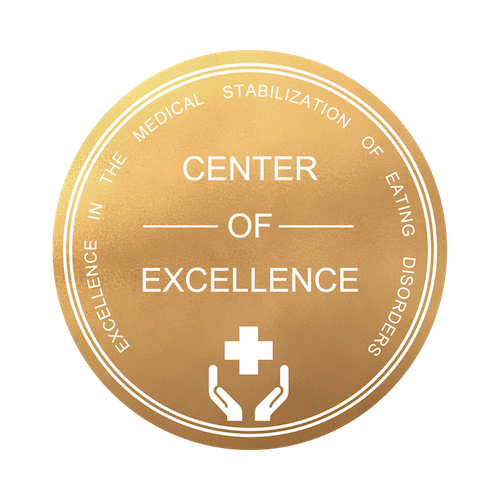Red Eyes and Bulimia: Why it Happens
Why Some Patients with Bulimia Develop Red Eyes
Bulimia nervosa is a disorder that consists of episodic binges (large amounts of food and drink ingested in a brief period) followed by self‐deprecating thoughts and a fear of gaining weight. This eating disorder results in behaviors intended to rid the body of the effects of the binge, including fasting or exercising (non-purging subtype), vomiting, laxative, or diuretic use (purging subtype).
In rare cases, patients with bulimia or other diagnoses associated with purging behaviors might have broken blood vessels in the eye (subconjunctival hemorrhage) related to repeated episodes of forceful vomiting. When purging, there is an acute increase in pressure in the eye that can cause the blood vessels to rupture, causing the white of the eye to appear bright red.
Self-induced vomiting can also cause periorbital petechiae (small red dots around the eye). Like rupturing the blood vessels within the eyes, purging can also cause the capillaries (tiny blood vessels) around the eyes to break, causing a red speckled appearance.
Red Eyes and Dehydration
Dry eyes are another common complaint by those with eating disorders. Self-induced vomiting, laxative and diuretic abuse, and fasting can all cause dehydration, making the eyes dry and irritated. Dry eyes maybe exacerbate redness if the patient is frequently touching or rubbing their eyes.
Common Questions About Red Eyes
Do Bulimia-related Red Eyes Affect Vision?
Fortunately, retching-induced red eyes and redness around the eyes have no impact on vision.
Are Red Eyes a Sign of a Life-threatening Bulimia Complication?
While red eyes due to bulimia are rare, it is neither life-threatening nor a sign of any life-threatening complication.
Red Eye Treatment & Recovery Timeline
There is no specific treatment for red eyes. Red eyes typically resolve with time. Subconjunctival hemorrhage typically resolves within two weeks. However, if purging has not ceased, red eyes may reoccur or persist beyond this period. Periorbital petechiae typically resolve shortly after vomiting.
Other Physical Manifestations of Bulimia
There are a variety of physical manifestations of bulimia nervosa, some of the common ones that occur alongside red eyes are sialadenosis, calloused knuckles and erosion of dental enamel.
Chipmunk Cheeks (Sialadenosis)
One of the ubiquitous signs of bulimia is what’s known as sialadenosis, or “chipmunk cheeks.” Chipmunk cheeks are caused due to the enlargement of the parotid gland, one of three of the human body’s salivary glands. The exact cause of sialadenosis is unknown but seems to develop with the cessation of excessive purging (vomiting). Treatment can consist of supportive care and sialagogues (medications that help to increase saliva production).
Calloused Knuckles
Calloused knuckles, or Russel’s sign, is a pathognomonic finding of bulimia. Calloused knuckles occur due to pushing the fingers into the mouth, causing irritation and abrasions on the back of the hand.
Erosion of Dental Enamel
Another common sign of bulimia is the erosion of the dental enamel, which is most noticeable in patients who self-induce vomiting and is most notable on the lingual surface (part of the tooth facing your tongue) of the upper teeth.
Resources
- Garcia BG, Ferrer AD, Jimenez ND, Granados FJA. Bilateral parotid sialadenosis associated with long-standing bulimia: A case report and literature review. J Maxillofac oral surg 2018;17(2):117-21.
- Mehler PS and Andersen AE. (2022). Eating Disorders: A Comprehensive Guide to Medical Care and Complications (4th edition). John Hopkins University Press.
